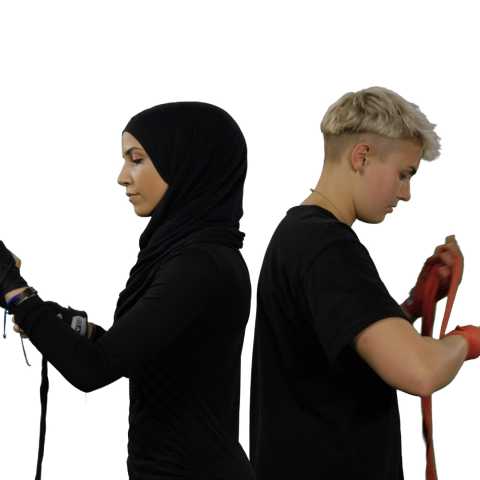Banner Repeater
Banner Repeater CIC
Hackney Downs train station
Dalston Lane
Hackney
E8 1LA
United Kingdom

Anna Zett plays with the physical end of language in a newly commissioned video and text work, with performance. Through the production of text and images emerging both from her own boxing practice and the archives of modern art and commerce, she searches for links that connect the experience of fist fighting with verbal and visual communication. The boxing ring, a square in fact, is re-imagined as a mythical space, created by boxers, artists and writers alike. Its ritual purpose would be to celebrate the dangerous transformation of monologue into dialogue, despite the extreme vulnerability of the human nervous system.In 19th century England, boxing - timed fist fighting with gloves inside a ring - started out as prize-fighting and the most dubious kind of sports betting. Barely legal and often bloody, it emerged from capitalist society with the promise of fame, money and respect for young men who had nothing to sell but their labour power. Unlike a factory worker though, a boxer is left to himself in the ring, stripped of everything but his vulnerable, versatile, aggressive, alert physical self. Whilst completely focussed on one another as opponents, two fighters act out what the spectators recognize as style - the effect of choreographic training and consistent neuro-muscular conditioning, influenced by an individual body language that started to develop long before training began.Women were banned from the boxing ring longer than almost any other place in secular Christian societies. To meet, with the ambition to channel physical aggression face-to-face is an ability seriously at odds with patriarchal notions of feminine competition. Like other martial arts, boxing is about regulated violence: about creating a zone in space and time, where equal beats equal. Boxing is a radical form of dialogue, just like a caress, but at the other end of language. A punch stands for nothing but itself, it isn't symbolic; it has no meaning. A punch can't lie, but it can trick you.
Anna Zett plays with the physical end of language in a newly commissioned video and text work, with performance. Through the production of text and images emerging both from her own boxing practice and the archives of modern art and commerce, she searches for links that connect the experience of fist fighting with verbal and visual communication. The boxing ring, a square in fact, is re-imagined as a mythical space, created by boxers, artists and writers alike. Its ritual purpose would be to celebrate the dangerous transformation of monologue into dialogue, despite the extreme vulnerability of the human nervous system.
In 19th century England, boxing - timed fist fighting with gloves inside a ring - started out as prize-fighting and the most dubious kind of sports betting. Barely legal and often bloody, it emerged from capitalist society with the promise of fame, money and respect for young men who had nothing to sell but their labour power. Unlike a factory worker though, a boxer is left to himself in the ring, stripped of everything but his vulnerable, versatile, aggressive, alert physical self. Whilst completely focussed on one another as opponents, two fighters act out what the spectators recognize as style - the effect of choreographic training and consistent neuro-muscular conditioning, influenced by an individual body language that started to develop long before training began.
Women were banned from the boxing ring longer than almost any other place in secular Christian societies. To meet, with the ambition to channel physical aggression face-to-face is an ability seriously at odds with patriarchal notions of feminine competition. Like other martial arts, boxing is about regulated violence: about creating a zone in space and time, where equal beats equal.
Boxing is a radical form of dialogue, just like a caress, but at the other end of language. A punch stands for nothing but itself, it isn't symbolic; it has no meaning. A punch can't lie, but it can trick you.
